FORRESTER LOOKS AT HISTORIC ICE STORM OVER A DECADE AFTER - The Mighty WV Forest Rebounds
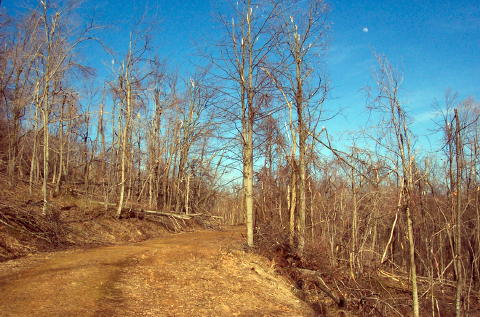
Story and photos by By Forester Russ Richardson
Many things changed when the ice storm went through our local woods in 2003. In just one day, millions of dollars value in standing timber was destroyed, the local timber business slammed to a halt and the thought of going in the woods for a casual walk was something that, at least temporarily, could only be done as a memory.
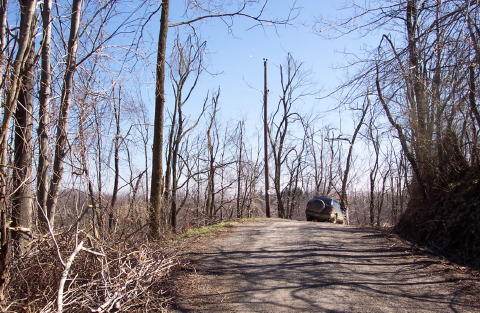
In most of the higher elevation areas of Calhoun County like Sand Ridge, Mount Zion and Liberty Hill, hardly a tree escaped being damaged by the ice and the ground was covered with a tangle of tree tops, limbs and uprooted trees that would take nearly ten years to rot.
For more than a year after the ice storm, broken limbs would drop from still standing trees every time a breeze blew through the woods. A decade later a few trees can still be found holding onto rotted limbs that are still dropping during severe weather.
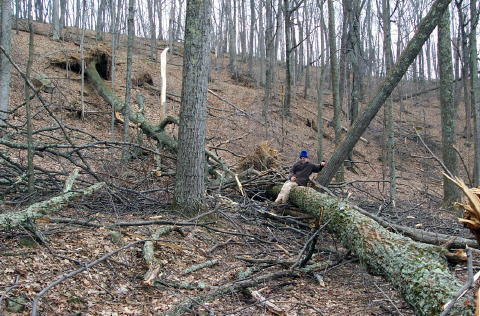
At the time the ice storm hit the local timber business was just starting to recover from the short Recession that followed the turmoil of 9/11.
Locally, so many trees were destroyed that the price of timber dropped by more than half as hundreds of local property owners scrambled to find buyers for their trees.
Red and while oaks and hickory trees were the most common species that were uprooted but yellow poplars probably suffered with the most damage to their tops.
On some farms the only trees that were uprooted were hickory and sassafras, and those were the properties where salvage logging was most likely to have occurred.
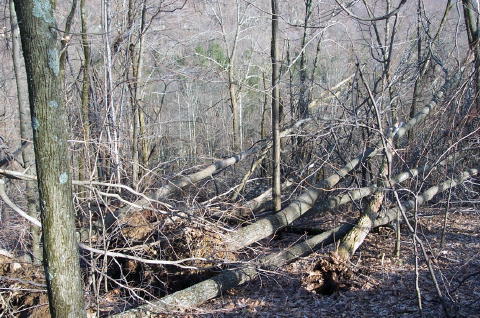
Unfortunately, in most areas where the ice storm damage was severe very little of the timber was salvaged. Although the trees were available to buy at bargain basement prices, loggers and sawmills soon found out that cutting ice storm damaged timber was much slower and more difficult, dangerous and wasteful than normal logging and nearly all the large timber companies stopped buying ice damaged timber which further hurt local property owners desperate to sell.
The three years following the ice storm came before the beginning of the Great Recession and were likely the last, best times for the old line West Virginia timber industry.
During that time it was possible for landowners in nearly every region of West Virginia to sell their standing timber at prices that were near record highs while all that woodland owners in much of Calhoun and Roane Counties could do is watch their trees rot.
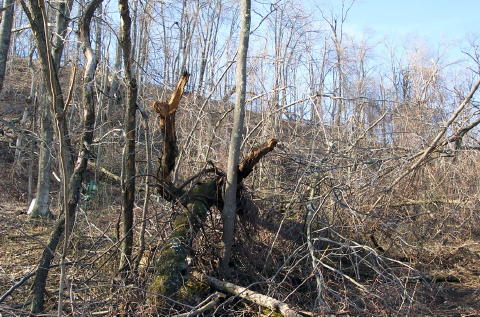
The 2003 ice storm destroyed over 300,000 acres of forestland that the WV Division of Forestry was still able to identify on aerial photos more than five years after the event.
The storm got a Federal disaster declaration which helped some people cope with monetary losses but most of the wrecked timber was owned by individuals that were long term property owners with limited ways to document their losses, ultimately leaving Calhoun County woodland owners several million dollars poorer than they already were.
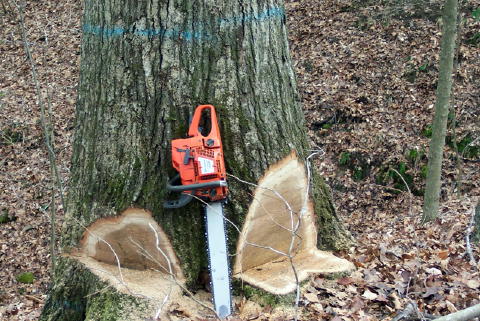
By the time ice storm debris had rotted enough to attract timber buyers back to our woods the value of red oak, which had been one of our most dependably valuable timber trees for decades, dropped to almost nothing with the collapse of the housing industry.
Since the beginning of the Great Recession the West Virginia timber industry has shrunk to a fraction of its former size. Today, for woodland owners in many portions of the state, especially remote places like Calhoun County competition for even the largest and best trees is nearly nonexistent.
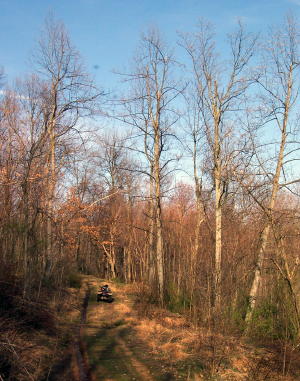
Taken seven years after the ice storm in the same location as the first photo, the poplar trees have started to regrow their tops. While lots of broken limbs will eventually heal over, some defects created by the ice damage will rot and permanently affect the vigor, quality and value of many trees.
There are several programs in place developed to provide assistance to property owners wishing to improve the quality of trees growing on their land. For information about forest management and landowner assistance programs available to West Virginia woodland owners call the West Virginia Division of Forestry in Charleston at 304-558-2788.
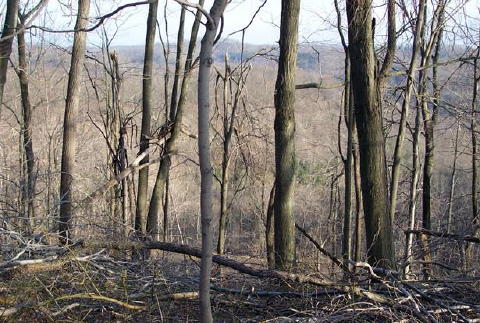
One way that the ice storm of 2003 changed life in Calhoun County was how much quieter summer weekends became in some locations. The storm debris blocked hundreds of miles of unauthorized ATV trails throughout the region.
In the late winter and early spring weeks following the storm, in addition to repairing pasture fences damaged during the storm, many farmers repaired gaps in their woodland fence lines in an effort to discourage uninvited ATV traffic through their land.
The practice was very successful and unauthorized ATV traffic through many woodlots and farms in Calhoun and Roane Counties has never returned to pre-ice storm levels.